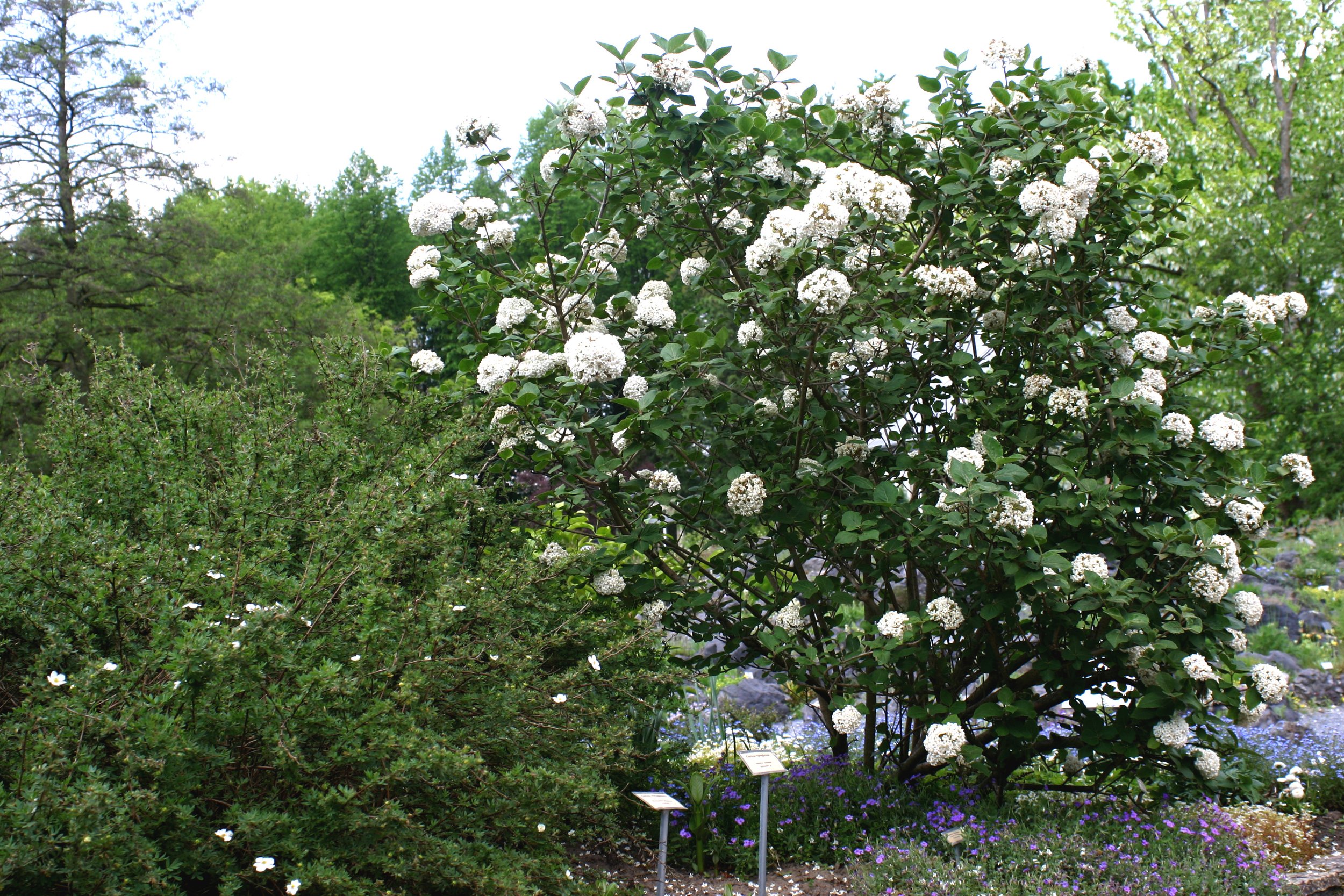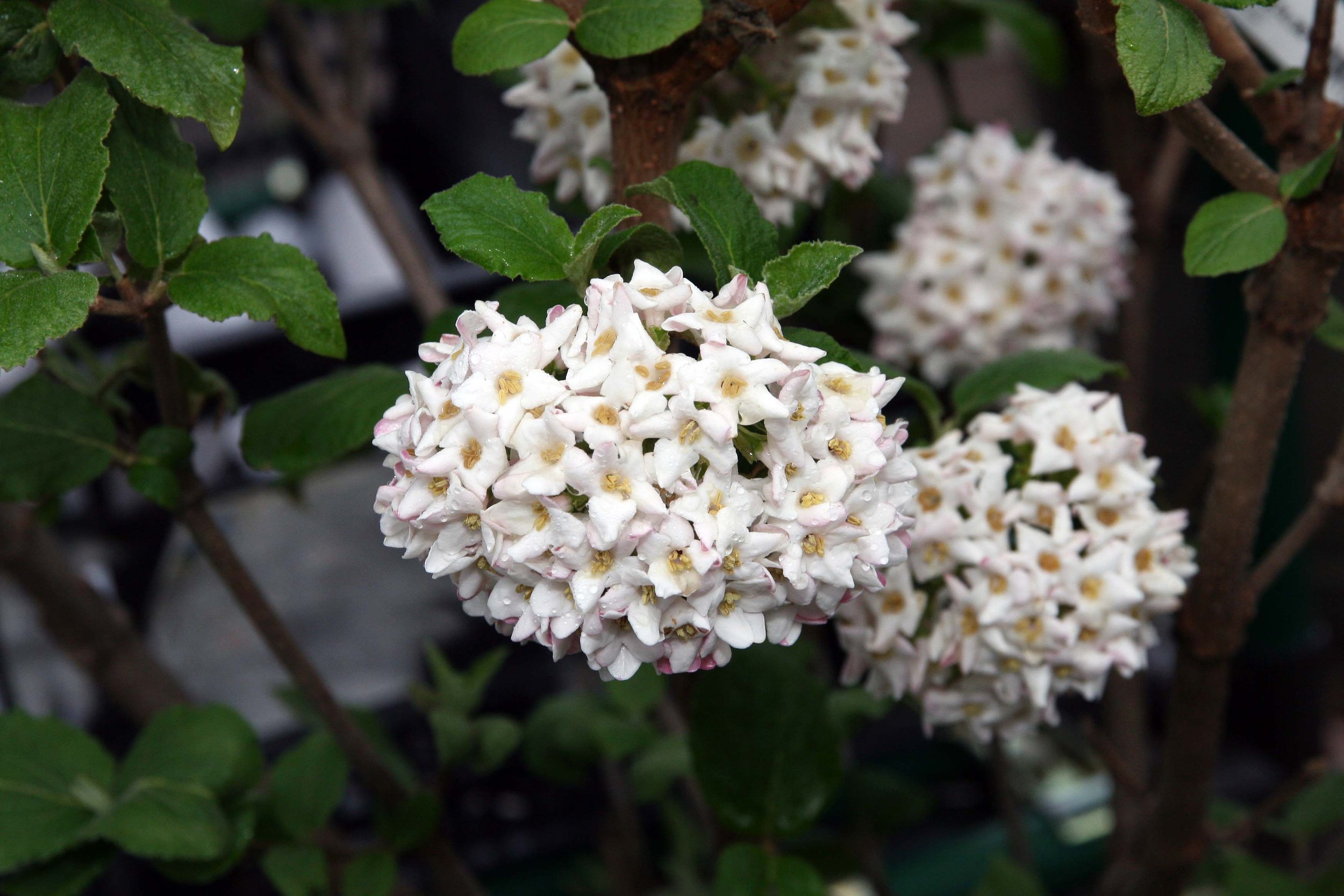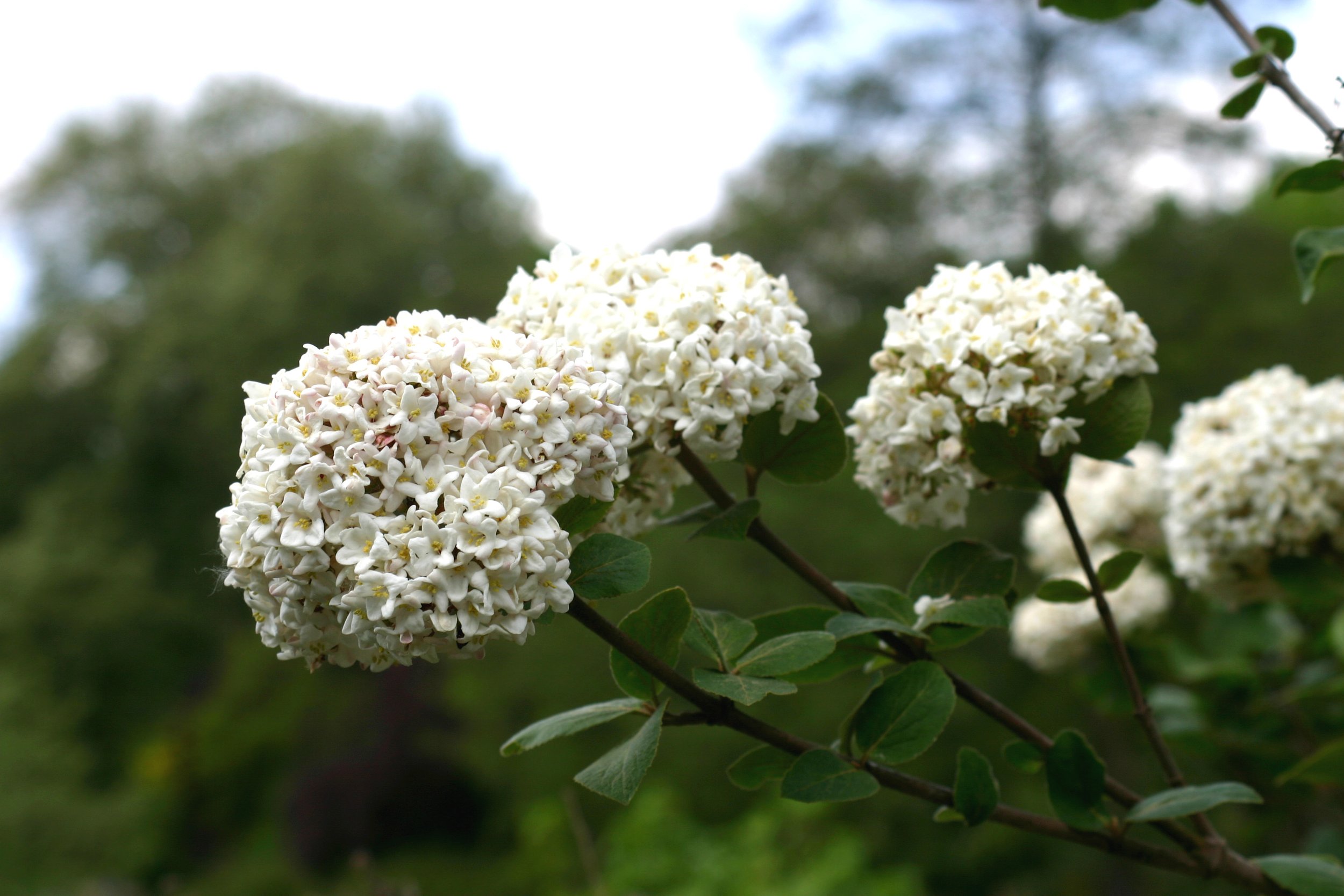In this third installment of “Asian trees for the Ohio landscape”, we’re switching gears and discussing a shrub that can make for an excellent addition to your landscape – the Korean spice viburnum (Viburnum carlesii). If you’re looking for a non-native tree option instead, check out parts 1 & 2 of this series where we discuss the Japanese katsura tree and the Japanese tree lilac.
The Korean spice viburnum is native to Korea and Japan. It is a shrub-like plant, typically growing to 4-6’ in height and width, and possibly larger (to 8’) under ideal growing conditions. When maintained at a smaller size, it makes a wonderful shrub for group plantings along borders or home foundations, but can also be planted individually as a specimen plant among other landscape trees and shrubs.
The Korean spice viburnum produces pink to white flower clusters around mid-spring, with an outstanding fragrance that rivals that of the most fragrant lilacs. For this reason, consider planting this shrub as a grouping in a location where you can enjoy the fragrance, such as near a front walkway or backyard patio. As a deciduous shrub, its foliage generally turns varying shades of red in the fall before dropping. To maximize flowering, it should be planted in full sun but will tolerate light shade. Pruning to maintain size and habit should be performed after flowering.
Average size of the Korean spice viburnum
The Korean spice viburnum will tolerate higher pH levels (more alkaline) and the clay soil often found in central Ohio, but prefers acidic, moist, well-drained soil. Care should be taken to not plant this shrub in poorly drained, consistently wet areas. Interestingly, even though it is a non-native shrub, it tolerates being planted in closer proximity to Black walnut, a native tree that produces a natural toxin that adversely affects some landscape plants.
If searching for a Korean spice viburnum at the nursery, make sure you select the right plant. Many species of Viburnum are available for use in the Ohio landscape, and they can vary greatly in size and habit. A common cultivar of the Korean spice viburnum that you may find available in the nursery that would make a suitable substitute is the Burkwood viburnum (Viburnum x burkwoodii), though it will tend to reach a slightly larger size in maturity.
The Entire 3-Part Series:
Walter Reins | Regional Manager, Russell Tree Experts
Walter has been an ISA Certified Arborist since 2003. He graduated from Montgomery College in Maryland with a degree in Landscape Horticulture, and has called Columbus, OH his home for nearly 20 years. Walter appreciates trees for their majesty and the critical role they play in our world.









